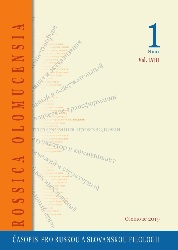Czeskie i polskie somatyzmy z leksemami hmat/dotyk i kůže/skóra (symbolika i ekwiwalencja wzajemna)
Czech and Polish somatic phraseological units with lexemes hmat/dotyk (“touch”) and kůže/skóra (“skin”) (symbolism and mutual equivalence)
Author(s): Dariusz TkaczewskiSubject(s): Lexis, Semantics, Comparative Linguistics, Western Slavic Languages, Phraseology
Published by: Univerzita Palackého v Olomouci
Keywords: Czech/Polish; lexemes hmat/dotyk (“touch”) and kůže/skóra (“skin”); symbolism; somatic phraseological units; mutual equivalence;
Summary/Abstract: The use of names of senses and sense organs as a basic component of so-called somatisms, i.e. phraseological units referring to human (animal) body/organism and its functions has a long history which goes back to ancient times. As a linguist and a Slavic studies specialist, the author of this article examines the fact that such phraseological expressions exist in closely related languages and investigates the issue of their equivalence – their mutual translatability. Phraseological expressions play an essential role in the teaching of Czech or Polish and in the work of translators of these languages, since learning, active knowledge and awareness of the content of rich phraseology, which has great semantic significance, are equally important as the knowledge of the vocabulary. In the course of the investigation, the author of this article indicates the meaning, sense and symbolism of taste and the tongue in world cultures, excerpts 40 (2+38) Czech and Polish phrasemes (without proverbs) containing these lexemes from available ‘classic’ dictionaries in which the particular sense hmat/dotyk (“touch”) and sense organ kůže/skóra (“skin”) make the main entry, orders and compares them in terms of equivalence, and presents the quantitative statistical data and the typology by means of three graphs.
Journal: Rossica Olomucensia
- Issue Year: 58/2019
- Issue No: 1
- Page Range: 25-39
- Page Count: 15
- Language: Polish

